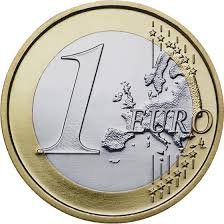Euro
The euro is the official currency of the (related to Europe) Union and its (land areas owned or controlled by someone). Now, 19 of 28 member states use the euro; this group of states is known as the eurozone or euro area. It is the second largest and second most traded currency in the foreign exchange market after the United States dollar. The euro is subdivided into 100 cents.
.jpg)
The currency is also officially used by the institutions of the (related to Europe) Union and its (land areas owned or controlled by someone), four other (related to Europe) countries, as well as (in a one-sided way) by two others, and is as a result used daily by some 343 million People from Europe as of 2018.Outside Europe, some across the ocean (land areas owned or controlled by someone) of EU members also use the euro as their currency. Also, 290 million people worldwide as of 2018 use types of money pegged to the euro.

The euro is the second largest reserve currency as well as the second most traded currency in the world after the United States dollar. As of August 2018, with more than (Euro)1.2 trillion in circulation, the euro has one of the highest combined values of paper money and coins in circulation in the world, having went past the U.S. dollar
The name euro was officially put into use on 16 December 1995 in Madrid. The euro was introduced to world (related to managing money) markets as an accounting currency on 1 January 1999, replacing the former (related to Europe) Currency Unit (ECU) at a ratio of 1:1 (US$1.1743). Physical euro coins and paper money entered into circulation on 1 January 2002, making it the day-to-day operating currency of its original members, and by May 2002 it had completely replaced the former types of money. While the euro dropped (after that) to US$0.83 within two years (26 October 2000), it has traded above the U.S. dollar since the end of 2002, peaking at US$1.60 on 18 July 2008. In late 2009, the euro became surrounded by the (related to Europe) sovereign-(money owed) serious problem, which led to the creation of the (related to Europe) (related to managing money) (firm and steady nature/lasting nature/strength) Facility as well as other good changes aimed at stabilising and strengthing the currency.
.jpg)
Issuing modalities for banknotes
1 January 2002, the national central banks (NCBs) and the ECB have issued euro paper money on a combined basis. Euro paper money do not show which central bank issued them.[dubious - discuss] Eurosystem NCBs are needed/demanded to accept euro paper money put into circulation by other Eurosystem members and these paper money are not (brought back or sent back someone to his or own home country). The ECB issues 8% of the total value of paper money issued by the Eurosystem. In practice, the ECB's paper money are put into circulation by the NCBs, by that/in that way getting/causing matching (things you owe/things you're responsible for/disadvantages) vis-Ã -vis the ECB. These (things you owe/things you're responsible for/disadvantages) carry interest at the main refinancing rate of the ECB. The other 92% of euro paper money are issued by the NCBs in proportion to their (pertaining to each person or thing) shares of the ECB capital key, calculated using national share of (related to Europe) Union (EU) population and national share of EU GDP, equally weighted